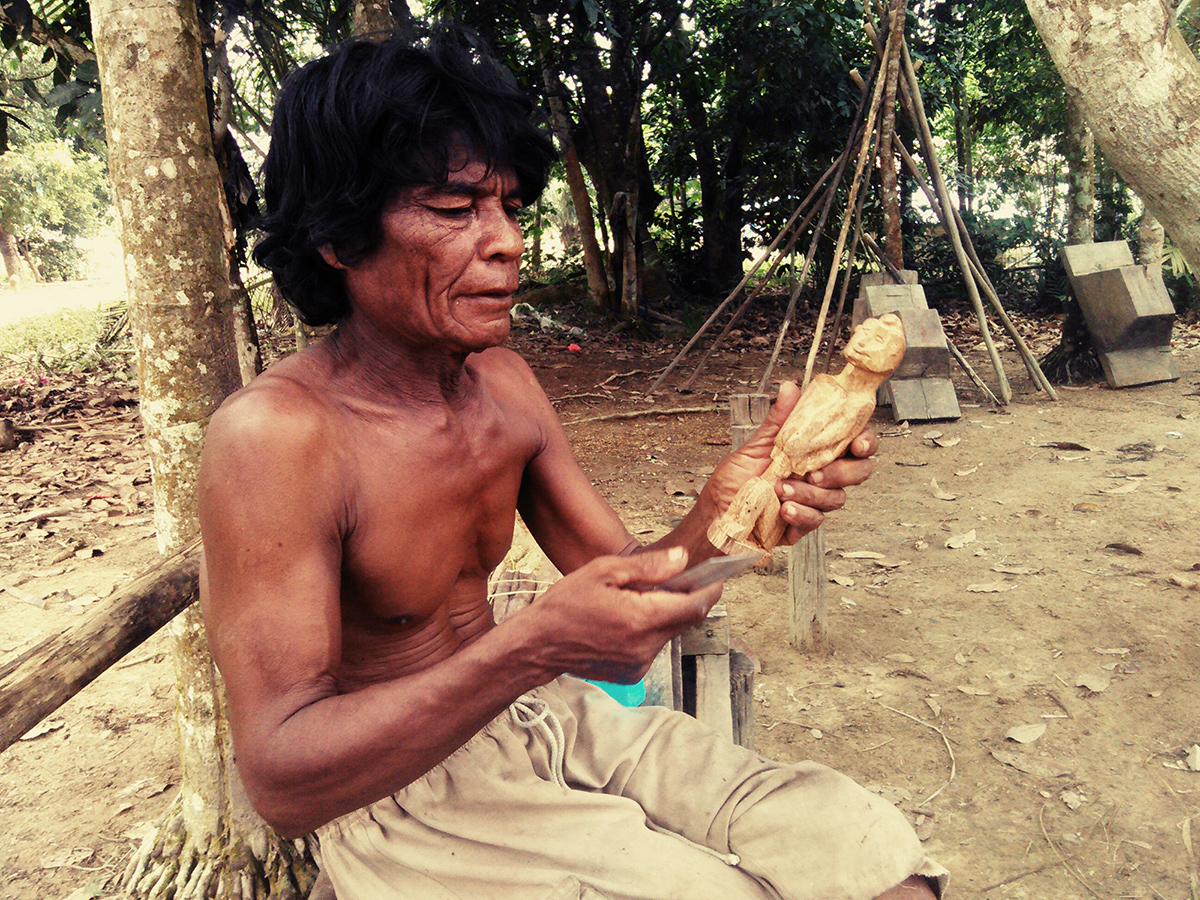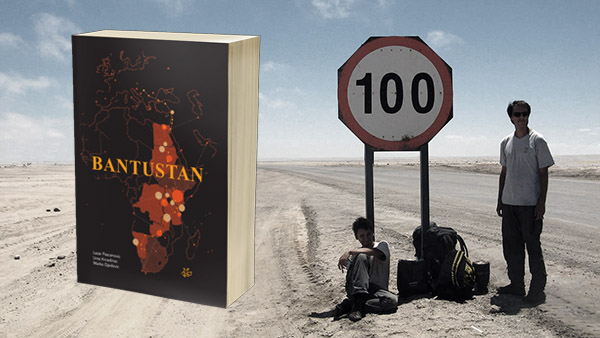 Photo: Aleksandar Isailovic
Photo: Aleksandar Isailovic
The village of Berdut lies at the very end of the road that ends abruptly when it reaches a dense jungle. This 300-strong community is the home of the Jah Hut, a tribe that belongs to the Orang Asli people of Malaysian Penang peninsula. The houses are wooden, raised on stilts, spacious, empty, dark, scattered along the forest road. The Jah Hut hunt, grow rice, cassava and bananas, and the little money they make comes from collecting kauchuk, and seasonal work on oil palm plantations.
My friend Aleksandar had spent a year in this village, helping them out. That is where he learned their language, so this time he acted as my translator. He took me there to meet his hosts, neighbors and friends. When we arrived to the village, they were happy to see him; me not that much. They were slightly suspicious but mostly just timid. Some of them turned their backs to me in order not to look into my eyes. But with a copious amount of smiles, one by one they accepted me too.
Our hosts were Pok and Iem, an elderly childless couple who spent most of their life helping their neighbors raise their kids. They were one of the few families that had electricity (which had reached the village less than two years ago), and they even had an old TV set where the community gathers in the evening to watch cartoons and series. Iem had just returned from a fishing trip, with a net full of wriggling catfish.
Do you like fish? – he asked and immediately took one out and impaled it on a stick to fry it.
Along with the catfish, the dinner also included rice with cooked bananas and purple potatoes. We ate all together on the floor, me being the only one using a spoon.
- Come on, a baby is sick. For two days already. We’re all going to menisoy – our host said after we finished dinner.
***
We walked in pitch darkness. From the depths of the jungle I could hear rhythmical, dull rumble, reminiscent of drums.
Tup - tup - tup… Tup - tup - tup…
The flashlight lit our path. The rumble grew louder and the contours of a house appeared in the moonlight. Yellow candlelight was visible through a window. The rumble quickly became extremely loud. We arrived to a wooden terrace on which ten to fifteen people sat in the dark. In their hands they had bamboo sticks with which they were hitting the floor in unison.
Tup - tup - tup…
There were another thirty people inside the house. The children slept on the floorboards while the adults sat on the floor lit by candles. They were talking, drinking coffee and chewing penang – everything, more or less, like on any other day.
In the farthest, smallest room a mother was breastfeeding a baby, while the father squatted next to them. They told us that the child had been coughing and breathing heavily for days, so the neighbors gathered and brought the shaman from the neighboring village, who would try to cure the baby. His name was Bolok and he had just entered the small room. He looked just like anyone else: dark-skinned, barefoot, with frayed blue jeans and a t-shirt. He squatted down next to the baby and started whispering into its ear. Meanwhile, the wooden walls shook from the banging of the bamboo sticks outside.
When Bolok stood up, we asked him how he had become a shaman.
- It was my own decision, but I had to convince the old village shaman to teach me everything. To prove to him that I was worthy – he said.
- How did you convince him?
- I had to spend three days and three nights all alone in the jungle. Without anything. That is how you meet all the spirits there. You stare death in the eye. You overcome all your fears. Some apprentices never return. Some return, but possessed of evil forces. They never recover.
- And that is all?
- No. I had to learn many things. In the end, the old shaman spat into my mouth. That is how the power was passed on to me, and everyone started to respect me – he replied and went outside to the terrace.
***
Menisoy lasts for two nights. Both nights the shaman chants mantras in the Jah Hut language, which some of the household members repeat after him. This goes on from dusk till dawn. On the second night a doll is prepared, usually a carved wooden figurine that represents the ailing person. The goal is to transfer the disease to that object.
We walked out to the terrace too. There were almost twenty people there, holding bamboo sticks. The shaman stood in front of the figurine and chanted, the others repeating his words, all the while beating on the floor. The sound must by no means stop until the morning, we were told. This is how the evil spirits are summoned and asked for help, to transfer the little girl’s disease to the wooden doll. In the morning, the doll is sent down the river.
The people with the bamboos occasionally switched, the exhausted ones going inside for refreshment, then coming back, but the rhythm never stopped. The two of us sat down too, lifted the two remaining sticks and started, awkwardly, to follow the beat.
Tup - tup… Tup.
- Why don’t you take the child to the hospital? – we asked the parents.
- No. The shaman is here. The spirits will help.
- What if they don’t come?
- They will come...
--
* Pinang or betel nut is a bitter nut wrapped into a betel leaf. It makes the teeth and tongue turn red, and upon chewing causes dizziness and light hallucinations. It is often used in this part of Asia.

